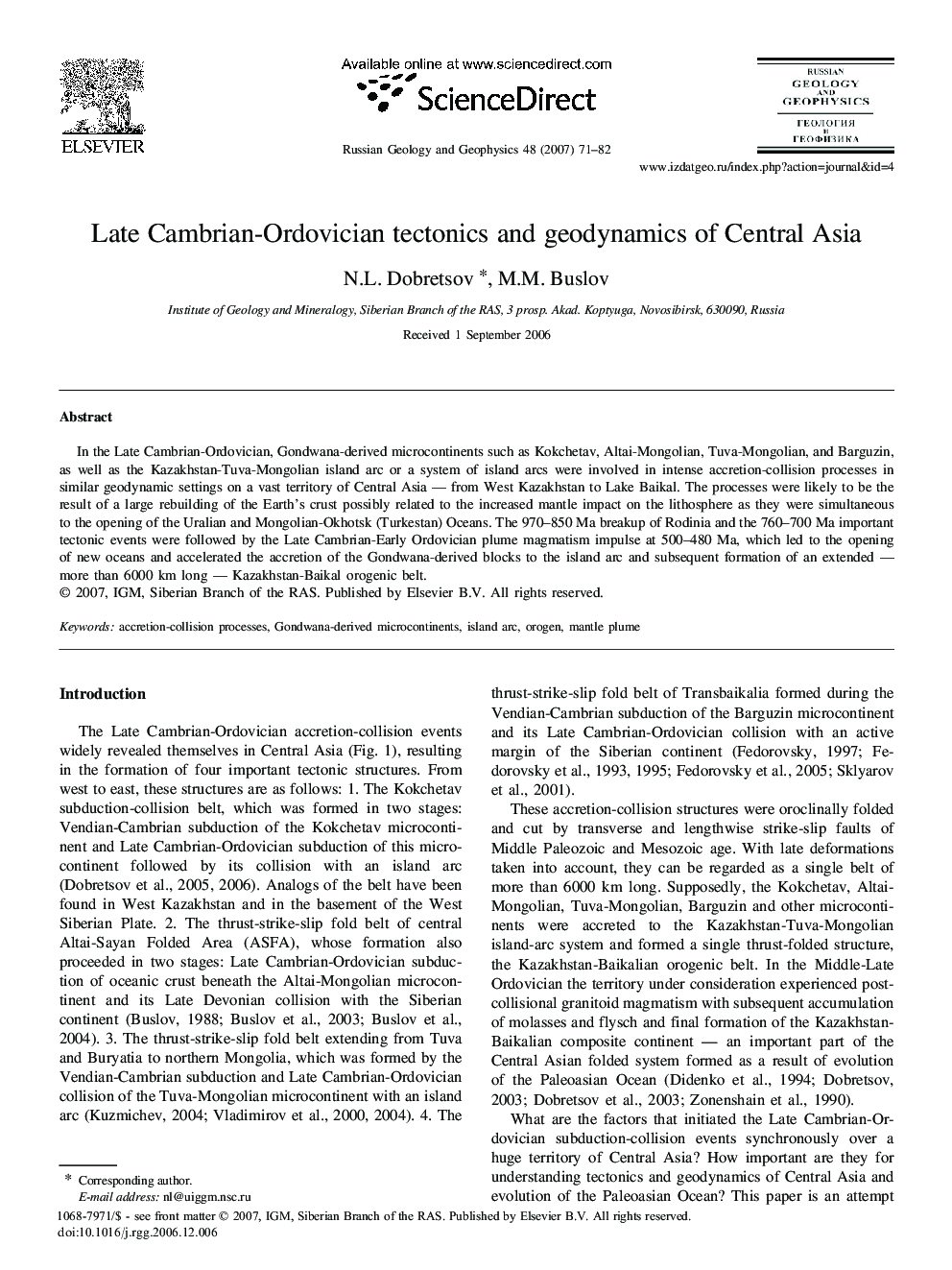| کد مقاله | کد نشریه | سال انتشار | مقاله انگلیسی | نسخه تمام متن |
|---|---|---|---|---|
| 4738295 | 1358256 | 2007 | 12 صفحه PDF | دانلود رایگان |

In the Late Cambrian-Ordovician, Gondwana-derived microcontinents such as Kokchetav, Altai-Mongolian, Tuva-Mongolian, and Barguzin, as well as the Kazakhstan-Tuva-Mongolian island arc or a system of island arcs were involved in intense accretion-collision processes in similar geodynamic settings on a vast territory of Central Asia — from West Kazakhstan to Lake Baikal. The processes were likely to be the result of a large rebuilding of the Earth’s crust possibly related to the increased mantle impact on the lithosphere as they were simultaneous to the opening of the Uralian and Mongolian-Okhotsk (Turkestan) Oceans. The 970–850 Ma breakup of Rodinia and the 760–700 Ma important tectonic events were followed by the Late Cambrian-Early Ordovician plume magmatism impulse at 500–480 Ma, which led to the opening of new oceans and accelerated the accretion of the Gondwana-derived blocks to the island arc and subsequent formation of an extended — more than 6000 km long — Kazakhstan-Baikal orogenic belt.
Journal: Russian Geology and Geophysics - Volume 48, Issue 1, January 2007, Pages 71-82